New York Dispatch II
Autumn 2019
Some say the world will end in fire. Some say in ice. As for September in New York, it ended with an even divide between marble and textiles.
Carpenters Workshop Gallery opened ‘Karl Lagerfeld | Architectures’ (14th September – 15th November) in their Upper East Side space. Most attendees wore black and white, perhaps in conscious tribute to Karl – but more likely because of his influence. The works swing between ancient Greek and contemporary references, depending on the angle. Side tables inspired by Doric columns sat like chess pieces along one wall, made infinite by the mirrored screen behind them.

Karl Lagerfeld, ‘Untitled VII’ side tables, 2018
COURTESY: Carpenters Workshop Gallery
Lagerfeld uses two rare types of marble: Arabescato Fantastico (white with dark grey veins) and Nero Marquina (inky stone threaded with white). In the words of Emperor Nero as he left this world, “What an artist dies in me.”
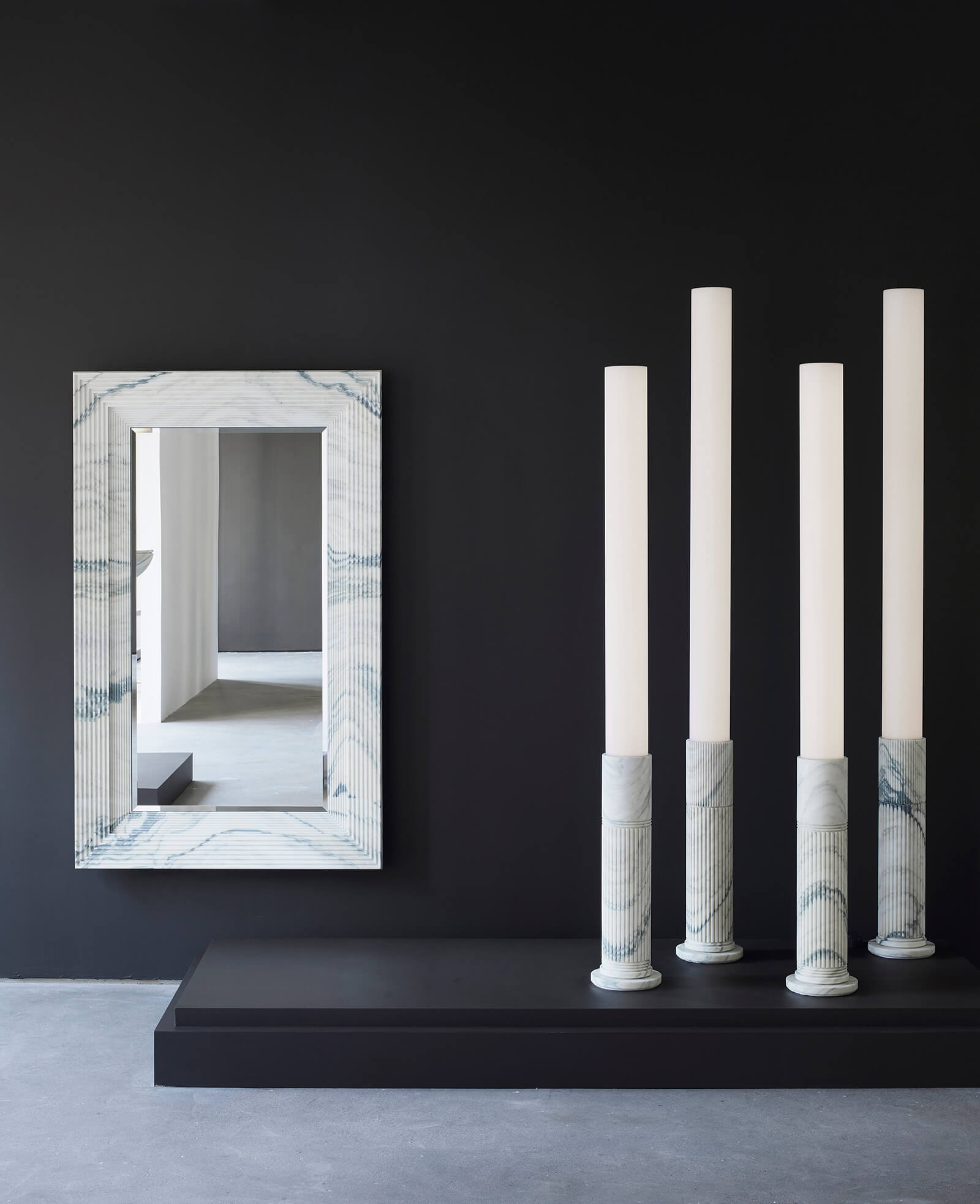
Karl Lagerfeld, ‘Untitled XI’ mirror, 2018; ‘Untitled VIII’ diffusing tubes, 2018
COURTESY: Carpenters Workshop Gallery
Rizzoli released a monograph titled simply Rick Owens. Like Lagerfeld, Owens is a fashion designer who has crossed into the realm of collectible design. For Owens, this is an outcome of his monastic approach to creation, take for instance his marble bed frame, which requires a ritualistic devotion to minimalism – and perhaps discomfort.
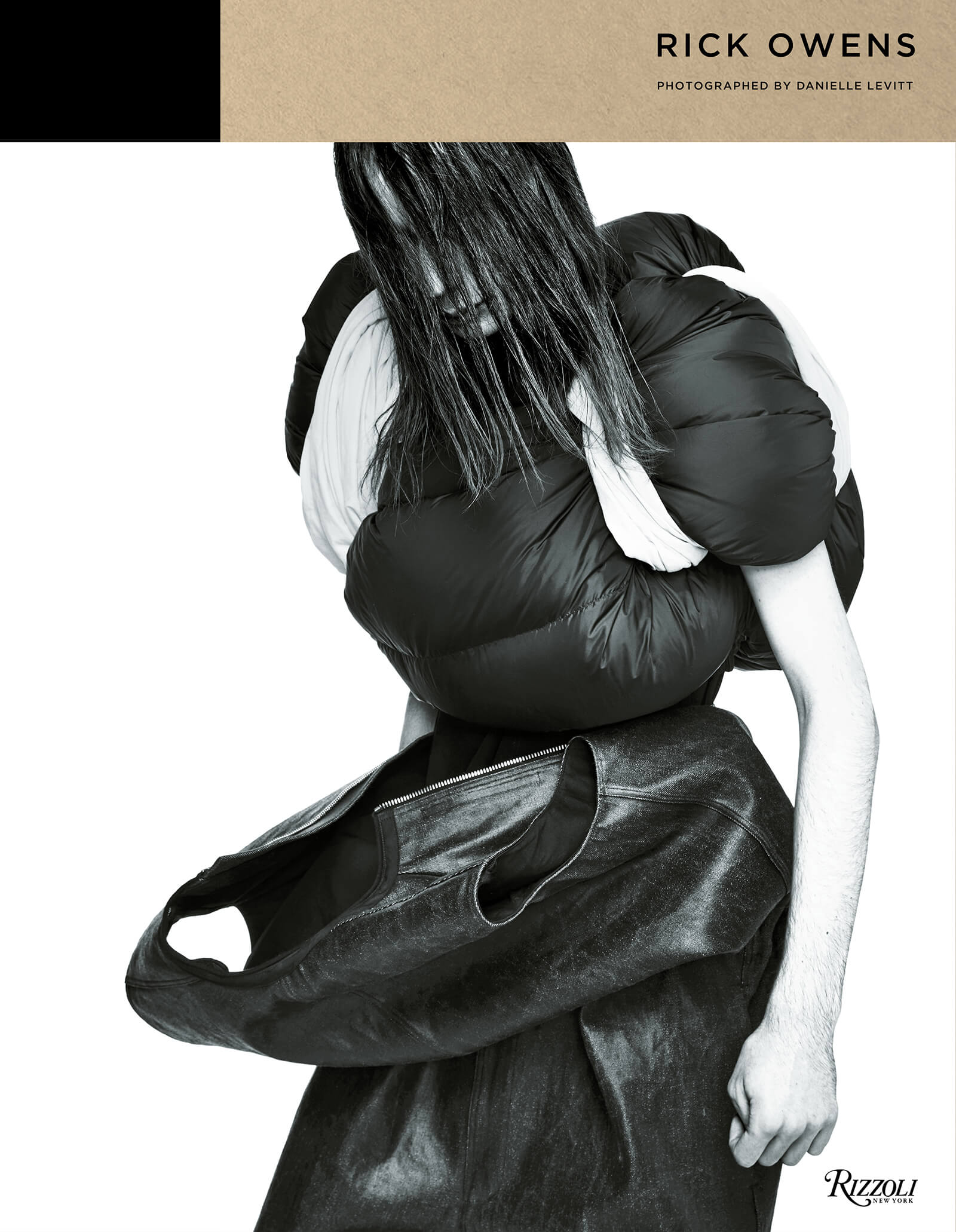
Rick Owens
COURTESY: Rizzoli New York
In more marble news, Patrick Parrish opened ‘Hanna Eshel Painting & Sculpture 1960 to 1985’ (12th September – October 19th), his second solo exhibition of the artist. Part of the thrill of viewing Eshel’s work is the frisson of knowing it almost ended in the shadows. Although Eshel was an active part of the art scene in Europe, she lost her desire to show her work when she moved to New York in the late 1970s (with 20,000 pounds of marble!). Her work was rediscovered by a potential Craigslist roommate who introduced her to Parrish.

Installation view, ‘Hanna Eshel Painting & Sculpture 1960 to 1985’
COURTESY: Patrick Parrish
Eshel finds the secret organic textures at the heart of stone, like scooped out fruit. One corner of the gallery is devoted to small, polished pieces like tiny bones and a necklace of chunky marble rings like vertebrae.
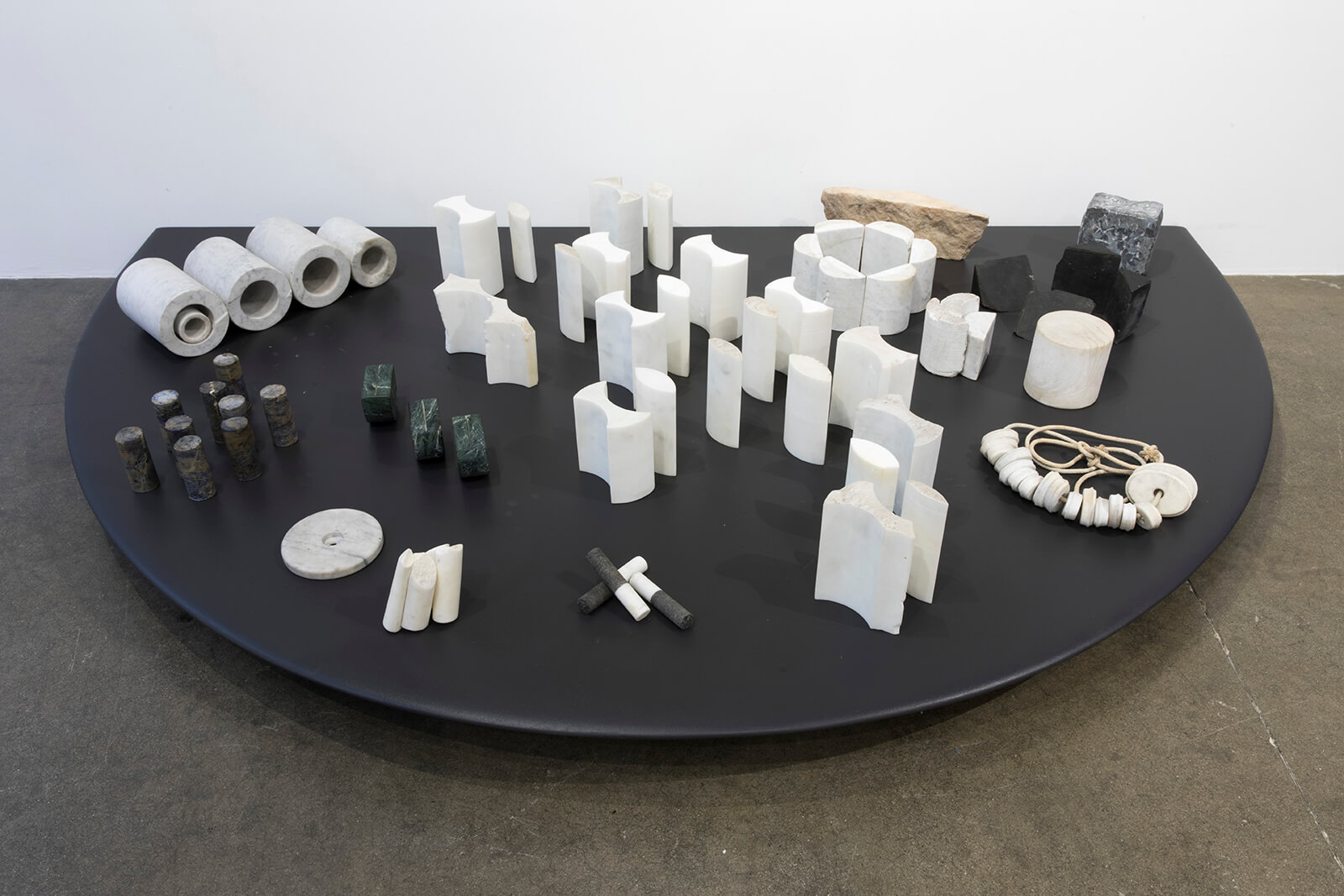
Installation view, ‘Hanna Eshel Painting & Sculpture 1960 to 1985’
COURTESY: Patrick Parrish
Hostler Burrows showed six of their new artists. Each of the artists works in either glass or ceramics, although their outcomes are entirely different. Ceramic vessels by Eun-Ha Paek have their own personalities: ‘Drunken Vase’ (2018) is slowly unravelling; while ‘Ohr Vase or Vase’ (2018) – a reference to nineteenth century American potter George Ohr – seems poised to give birth to a tinier vase.
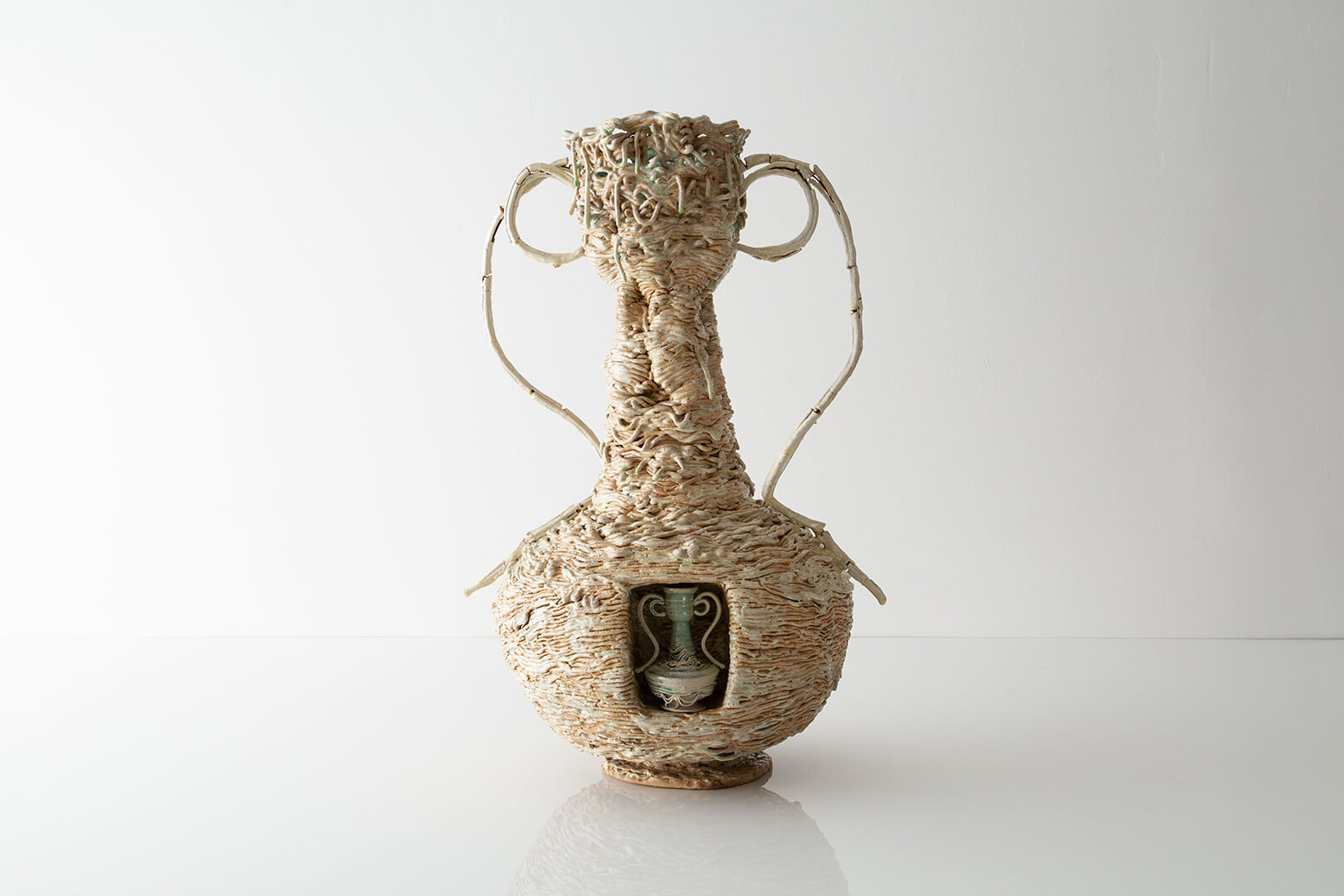
Eun-Ha Paek, ‘Ohr Vase or Vase’, 2017/18
COURTESY: Hostler Burrows
Meanwhile, Mårten Medbo twists stoneware into cold knots with ‘Hose’ (2019), or polished spheres – like rings of ball-bearings – ‘Torroid’ (2019).

Mårten Medbo, ‘Torroid’, 2019
COURTESY: Hostler Burrows
September was also New York Textile Month. Christina Kim of dosa took over the airy 9th floor of a SoHo office building with ‘flyingfishproject’. A sheer curtain printed with maps of Joshua Tree National Park, and hand-sewn silhouettes of knotty desert trees climbed toward the peeling, black paint of the ceiling. On tables throughout the space, Kim laid out sketches and process shots for each of the nine Palm Springs flora she translated into embroidery for a separate hanging textile. Tinted photocopies of antique plant pressings covered one wall. The one piece that was notably not a Kim original, but fitting nonetheless, was a stuffed Campana Brothers alligator chair enjoying the scene from a safe distance.

Installation view, Christina Kim, ‘flyingfishproject’
COURTESY: Christina Kim
At the Met Breuer, ‘Phenomenal Nature: Mrinalini Mukherjee’ marked the first retrospective of the Mumbai-born artist in the United States (Mukherjee died in 2015). Eschewing a loom, the artist used a combination of knotting and makeshift frames to turn a jute-like fibre into deities both friendly and frightening.
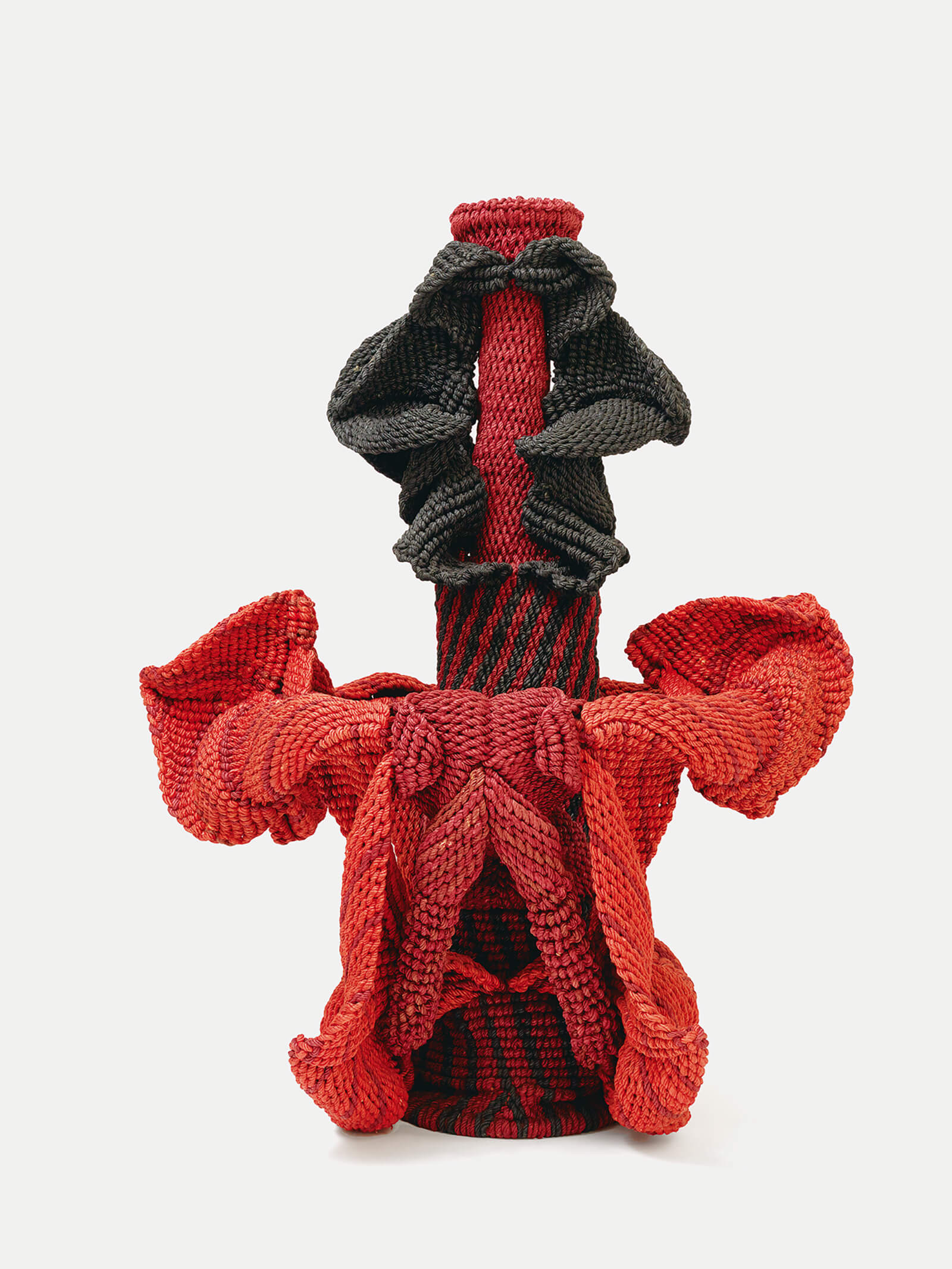
Mrinalini Mukherjee, ‘Adi Pushp II’, 1998-99
COURTESY: The Met Breuer
Later in her career she turned to ceramic and eventually bronze. Her final series was ‘Palmscape’, bronze sculptures cast from plant fragments.

Mrinalini Mukherjee, Palmscape VII’, 2013
COURTESY: The Met Breuer
It’s easy to focus on the micro details of Anni Albers’s textile mastery and forget that she was an artist that also conquered scale. ‘Anni Albers’ at David Zwirner has done its part to remind us of her scale, as smaller works in the first rooms of the gallery give way to the 10 foot square ‘Camino Real’ (1968) wall hanging, shown outside Mexico City for the first time (its original home the Lobby Bar of the city’s Hotel Camino Real). Composed entirely in three shades of red, it’s reminiscent of ‘Vir heroicus sublimis’ [‘Man, heroic and sublime’] Barnett Newman’s grand red work. Although, looking at Albers’s legacy it’s clear enough that the sublime is a woman.

Anni Albers, ‘Camino Real’, 1968
COURTESY: David Zwirner
Rick Owens is published by Rizzoli, New York, September 2019.
‘Karl Lagerfeld | Architectures’ runs until 15th November at Carpenters Workshop Gallery,693 Fifth Avenue, New York.
‘Hanna Eshel Painting & Sculpture 1960 to 1985’ runs until 19th October at Patrick Parrish, 50 Lispenard Street, New York.
Hostler Burrows – one of New York City’s richest destinations for design and decorative arts.
New York Textile Month (NYTM) – a month-long, city-wide festival designed to celebrate textile creativity and promote textile awareness.
Dosa – special projects.
‘Phenomenal Nature: Mrinalini Mukherjee’ at The Met Breuer closed on 29th September.







